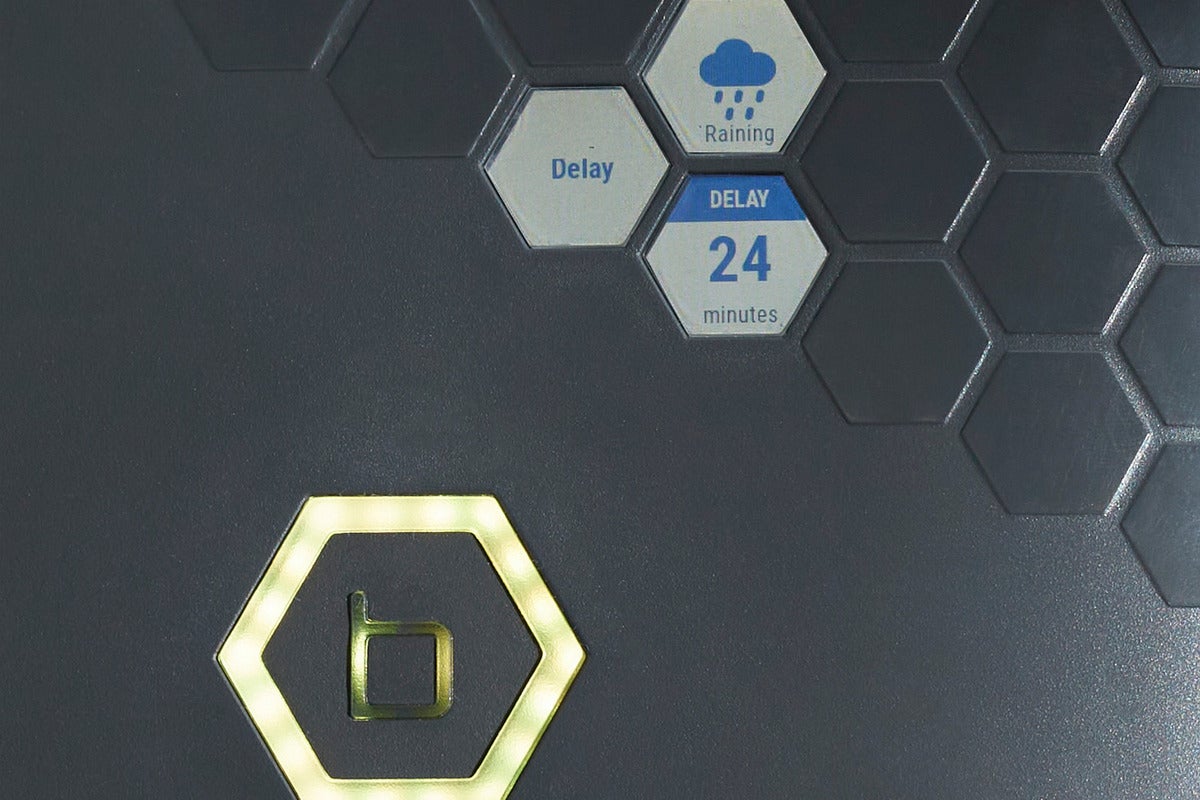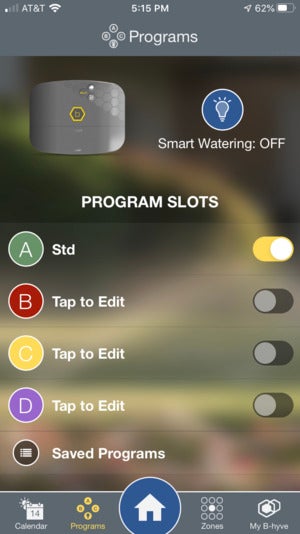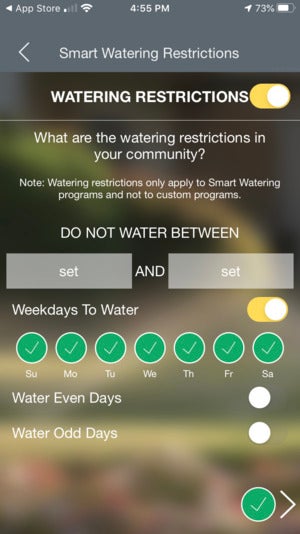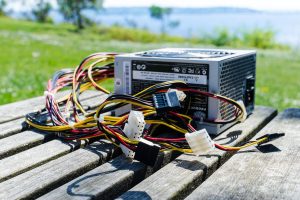[responsivevoice_button rate=”1″ pitch=”1.2″ volume=”0.8″ voice=”US English Female” buttontext=”Story in Audio”]
Orbit B-hyve XR sprinkler timer review: A great irrigation system
Three years after its first steps into smart irrigation systems, Orbit’s B-hyve brand is back with its most advanced smart watering hardware yet. The new B-hyve XR is stuffed with features, so let’s dive into it.
For starters, the hardware—a beefy device that weighs more than two pounds—is designed for either indoor or outdoor installation, with no additional housing required. (That said, the device is clearly not fully waterproof, so I’d advise giving it some level of protection if you’re mounting the XR outside.)
This review is part of TechHive’s coverage of the best smart sprinkler controllers, where you’ll find reviews of competing products, plus a buyer’s guide to the features you should consider when shopping for this type of device.
A row of connectors beneath a removable panel supports up to eight valves (or 16 valves for the next model up, which costs an additional $30) and includes room for a rain or freeze sensor. Unique to the smart irrigation space, the XR includes no external power brick (which is one reason why it’s outdoor friendly); the transformer is instead built into the main housing. This also helps to explain its overall size and weight.
 Orbit
OrbitThe Orbit B-hyve XR relies on the typical clips to secure your sprinkler system’s wiring, but it takes quite a lot of force to shove the leads in (16-zone model shown here).
As with most smart watering systems, your valve leads attach via simple wire clips. (The previous B-hyve required wiring to be attached with tiny screws.) I initially tried inserting my leads into these clips and thought they were connected, only to find that when I ran a test watering run, nothing happened. After some trial and error, I found that the XR requires fairly long wiring leads, and those leads need to be inserted with a significant amount of force in order to hold. I ended up trimming and re-stripping my wiring to improve the connection, after which everything worked fine.
With the B-hyve XR powered up, you’ll quickly notice its most interesting feature: A panel of three tiny, color LCD screens built into the hexagonal design pattern on the housing. These micro-displays give you some basic information about your system, including the current weather and the time and date of your next scheduled run time. Strangely, the weather report only includes the overall condition (sunny, raining, etc.) but not the temperature, which would have been a bit more useful.
 Christopher Null / IDG
Christopher Null / IDGWhile it’s a monstrous hardware device, the B-hyve XR offers a number of new features you won’t find on competing water controllers.
Once your hardware is configured, it’s time to use the B-hyve app to connect the system to Wi-Fi. Both 2.4GHz and 5GHz networks are supported, and I had no trouble bringing the XR online, after which I could begin configuring my watering zones. Like most modern sprinkler controllers, the B-hyve XR offers both manual and “smart” watering programs, the latter setting up what it thinks is an ideal watering schedule based on answers you provide about the size, condition, and composition of your lawn or garden.
 Christopher Null / IDG
Christopher Null / IDGYou can set up to four separate watering programs, or let B-hyve’s smart watering system decide for you.
After telling the app about the soil, plant types, sprinkler heads, ground slope, and sun condition, my system suggested a somewhat strange smart watering schedule: two 18-minute soaks, one right after the other, running once every three days. I don’t know if this is really the ideal way to water my plants, as I know a smaller amount of water every day tends to work best in my garden. The total amount of water being delivered over the course of a week, however, was just about right.
If you want to fine-tune things, B-hyve supports catch cups, wherein you physically measure the actual amount of water your system is putting out, and then use that information to tweak its programming. As well, if you have a Flume water-leak system installed, a new partnership with that company lets you use its data to measure exactly how much water each zone is using. If the numbers suddenly jump, that’s a sign that there’s a leak or break somewhere in your irrigation tubing. This feature is available now, but Orbit says it won’t be fully implemented until the end of the year.
If you don’t like B-hyve’s smart schedule, it’s easy to disable. The system includes four manual program schedules that you can customize, and all five of these schedules (including the smart schedule) can be turned on and off individually or all run simultaneously. If your municipality has watering restrictions, you can include this information as a sort of master override over all programs to prevent water from flowing during certain days or times.
 Christopher Null / IDG
Christopher Null / IDGIf your water utility issues restrictions as to when you can irrigate, you can input that information into the B-hyve app.
The system includes configurable push notifications, but only for warnings and when watering is finished, not when it starts. Alexa and Google Home are both supported and fairly robustly, letting you use your voice to run on-demand watering programs, delay an upcoming schedule, and more.
B-hyve’s app is reasonably intuitive, but its biggest flaw is how it presents future and historical watering information. A daily calendar gives you a look at the watering schedule past and present, but it can only fit a few hours of a single day on the screen at a time, which means you’ll need to scroll up and down and do a lot of switching between days to get a good sense of what’s going on. There’s also a “watering history” function deep in the settings menu, but this only shows you the last time that water was run, not a true history of watering events. If B-hyve overhauls the calendar to be more functional, it’ll go a long way toward enhancing its overall usability.
The B-hyve XR also includes onboard controls that let you do a lot of things by interacting with the hardware, sans app, but this is largely a missed opportunity: There’s only a single button on the front of the XR, and you use that to do everything, through combinations of short presses and long presses of that one button. Figuring this out isn’t easy, so B-hyve includes an exhaustive cheat sheet on the inside of the flap that covers the wiring leads. But it’s written in tiny type, so you’ll need to remove it entirely to make any use of it. And frankly, all of this is really convoluted; it’s much easier to just use the app rather than futz with the button.
At $150 for an 8-zone unit, the B-hyve XR is a good value, if not quite an insanely great one. The product works well and the learning curve is less steep than with competing hardware; as such, it’s definitely worth serious consideration for just about any environment—especially if you need a unit that you can mount outside.


























